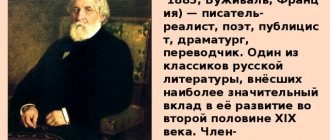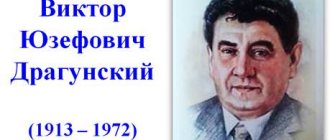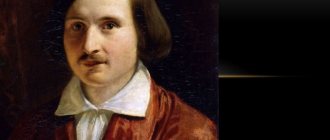- Reports and messages
- People
- Ivan Fedorov - pioneer printer
Nowadays, it has become common for us to buy and read periodicals and fiction.
But sometimes not everyone takes care of books in particular. In ancient times, only wealthy gentlemen had a rich library. It took a lot of time to publish one book. Writing volumes was considered a very honorable occupation, and therefore trusted people were chosen for this. Following the emergence of book printing in European countries, in Rus' in the 15th century, on the orders of the Tsar, a printing press was also created under the leadership of Ivan Fedorov. The future pioneer printer was born in the Kaluga region, then studied at the university in Krakow. When the young man received the appropriate education, he went to serve in the Church of St. Nicholas of Gostunsky. Metropolitan Macarius, who was a member of the chambers of Ivan the Terrible, became interested in the modest and highly educated young man. It was he who recommended that Ivan start creating a machine for printing book editions. And so in 1563, Fedorov began to carry out an important task for Rus' with his assistants Peter Mstislavets and Marusha Nerefiev. In the spring of 1564, one of the first books, “The Apostle,” was completed, which became a kind of textbook for students studying in church schools.
The most interesting thing was that it was written in the Old Church Slavonic language, the font used when printing was red and black, where the chapters were marked in red. The letters were drawn by hand. A lot of time was spent creating drawings of various sizes, depicting cedar cones and all sorts of overseas fruits. A year later, the second volume, “The Book of Hours,” was published. The high society was angry because the published books could be read by ordinary people, which means it was more difficult to command the educated people. Therefore, the printing house was soon burned, and the pioneer printer had to leave for Lithuania, where he created a new printing house and published the “Teaching Gospel” and “Psalter with Book of Hours.” When Hetman Khodkevich stopped providing sponsorship for his activities, Fedorov and his family went to Lvov, where he returned to his favorite work and published the Apostle and the Primer. The pioneer printer spent the last days of his life in Ostrog in Volyn. There he published six more books.
He was buried in 1583 in the St. Onufrievsky Monastery. The name of Fedorov is still in the memory of the Russian people. Since 1953, Fedorov Readings have been held annually, where important issues in book publishing are discussed.
Ivan Fedorov - pioneer report
Book printing appeared on the territory of Rus' only in the 16th century. For a long time before this, manuscripts were written by hand. This was done by monks at temples and churches. Composing the manuscript was too difficult a process. It took a lot of time to put everything together and write it right. People needed textbooks and books. The monks who wrote manuscripts and books were highly respected. But soon their work was made easier. The printing press appeared. In Rus' at that time, the master of printing was the pioneer printer Ivan Fedorov. Little is known about his life, few records have survived, and perhaps there were none at all. Today it is known that his family came from the Belarusian nobility. His family did not stand out in any way and was not particularly different from most families of that time.
Ivan Fedorov graduated from the University of Krakow. He was closely acquainted with Metropolitan Macarius, who contributed to Fedorov being appointed deacon in the Moscow church. There is a theory that it was the metropolitan who advised Tsar Ivan the Terrible to take Ivan, who was a very smart and educated man, to his place. From then on, Ivan Fedorov began to serve at the royal court. By decree of the king, the first printing press appeared in the royal court. Without the decree of Ivan the Terrible, no one at that time could print books. The Tsar did not want to give in to developing Europe and ordered the construction of his own Printing House. It was built in Kitai-Gorod, and, of course, Ivan Fedorov was appointed as its director. According to some sources and historical notes, Fedorov was not the founder of book printing in Rus'. Not long before this, an anonymous printing house operated in Moscow. It is still unknown who opened it and worked there. Many books came from an unknown press. Maybe these people didn't want to be noticed and decided to remain anonymous, now it's hard to say. Maybe they were afraid of persecution and persecution, since it was forbidden. Yet history remembers the one and only person who founded book printing in Rus' - Ivan Fedorov. The first book produced by the new printing press was entitled "The Apostle." The book was published in the world in the spring of 1564. At that time, Fedorov was no longer working alone; he had his own assistant, Pyotr Mstislavets. The masters worked on the new book for a long year. They made her a beautiful font, with each capital letter highlighted in red. Fedorov wanted his books to have the same majestic appearance that ancient manuscripts had. Each time the masters decorated the beginning of a new chapter with a variety of patterns.
After some time, another book is published. It was a prayer book, it was called “The Book of Hours.” This book became one of the most valuable and important; children learned to read from it for a long time. Life in Moscow did not work out for Ivan; he had many envious people and enemies. There was even a story when in 1566 a printing house was set on fire. After this, Ivan Fedorov and his assistant Peter go to Lithuania. The book printers did not live here for long. Their last refuge was Ukraine. Ivan Fedorov settled in the city of Lvov, where he opened the first printing house, already on Ukrainian soil. Here he continued to do what he loved - publishing books. Ivan Fedorov died in 1583 and was buried in the Lvov Monastery.
3, 4, 6, 7 grade
Pioneer printer Ivan Fedorov - presentation
“The history of the mind represents two main epochs: the invention of letters and printing.” N.M. Karamzin
Of course, everyone in Russia knows the name of Ivan Fedorov. The beginning of Russian book printing is associated with this name. He was born around 1520, although the exact date and place of his birth are unknown. But there is information that Fedorov studied at European universities. And in Europe, printing has been around for 100 years since it was invented by Gutenberg.
The first printing house in Moscow was opened in 1563, and on April 19 of the same year, Ivan Fedorov and his assistant Pyotr Mstislavets began work on the “Apostle,” typing its first page. The book was typed and printed for almost a year and was published on March 1, 1564.
The Moscow printing house was not a private, but a state enterprise; funds for the creation of the printing house were allocated from the royal treasury. The establishment of the printing house was entrusted to the deacon of the St. Nicholas Church in the Moscow Kremlin, Ivan Fedorov, because he was known as an experienced bookbinder, book copyist and carver-artist. Later, it was decided to build a Printing Yard, in which Ivan Fedorov took an active part in the construction. After construction was completed, the organization of the printing house itself began.
Ivan Fedorov studied, made numerous tests and soon achieved success; he learned to cast high-quality type and make impressions on paper. He was very educated, fluent in several languages: Greek, Latin, Polish. He was well versed in the intricacies of Church Slavonic grammar. Undoubtedly, Fedorov was familiar with Western European printed books. When creating the shape of his printed letters, he relied on the traditions of Russian writing and Russian handwritten books. In 1565, another book, “The Book of Hours,” was published in Moscow by Ivan Fedorov and Pyotr Mstislavets. Ivan Fedorov and his comrade in Moscow were very prominent and respected people. But the oprichnina introduced by Ivan the Terrible caused them great concern.
“For the sake of envy, many heresies were plotted against us,” Ivan Fedorov later wrote. Ivan Fedorov and Pyotr Mstislavets published two books in Moscow, but this is enough for Ivan Fedorov to forever remain the first printer of Rus'. And then Ivan Fedorov and Mstislavets left for Lithuania. There they resumed work. In 1569, the Teaching Gospel was published.
In 1574, Ivan Fedorov first published a book for Russian children, “ABC”. The second edition of the ABC was published in 1576 in the city of Ostrog, where Fedorov was invited by Prince Konstantin Ostrozhsky.
But the real feat of Ivan Fedorov was the colossal work on the complete Slavic Bible. This gigantic work took up 1256 pages. To create the Slavic text of the Bible, Fedorov and his assistants used not only the Greek, but also the Hebrew text of the Old Testament, as well as Czech and Polish translations. The Ostrog Bible, published in 2011, was Fedorov’s last printed work. After the Bible, Fedorov only released “Chronology” by Andrei Rymsha. It’s a pity, but Prince Konstantin Ostrozhsky soon lost interest in Fedorov’s publishing activities, and the pioneer printer again had to look for funds to continue his life’s work.
Ivan Fedorov spent his last years in Lvov, during these years he did a lot of things, invented a collapsible cannon and improved hand bombards. In 1583, Ivan Fedorov fell ill and “fell ill to death.” The Russian pioneer printer died in one of the outskirts of Lvov. He died in poverty, without the funds to redeem the printing property and printed books pledged to the moneylender. He was buried in the cemetery at the Church of St. Onuphrius. And today in Moscow, where Russian book printing began, there is a monument to the first printer Ivan Fedorov.
Popular message topics
- Nuclear weapons
Nuclear weapons are warheads that have enormous destructive power. This weapon is based on nuclear fusion, which releases the free energy of the atom. Nuclear weapons are considered the most powerful means of mass destruction. - The first trip around the world
The first person to circumnavigate the world was Magellan, who was born in 1470 and died at the age of 51. With this, he practically put an end to the issue of the shape of the earth, and also confirmed the fact that the earth has one common ocean. - 7 wonders of Moscow (list and description)
In 1586, the Tsar Cannon was cast by Andrei Chokhov at the Cannon Factory in Moscow. The largest cannon in the world was made during the reign of Fyodor, the son of Ivan the Terrible. The weapon was the brainchild of the development of foundry in Rus',
Report about Ivan Fedorov
Ivan Fedorov is the first printer in Russia.
The biography of Ivan Fedorov, on the one hand, is known, but on the other hand, it has not been studied at all and is full of contradictions.
The first biography of Ivan Fedorov was described in
1913
by the Russian archaeologist and philologist K. F. Kalaidovich.
But he had very little material on hand; even the date of death was not known at that time. In Soviet times, historian E. L. Nemirovsky conducted research on this topic. Initially, he writes that Ivan Fedorov was born in 1510, but then finds documents about the training of such a person from 1504
at the Krakow (Jagiellonian) University.
And so: Ivan Fedorovich Moskvitin, born approximately before 1510
.
Where and in what family is unknown. Based on his signature Moskvitin, researchers suggest that his birthplace was Moscow. But judging by the records in the records of the University of Krakow, which (it is assumed) he graduated as Ivan son of Fedorov Moskvitin (according to the register books), Petkovichi (Belarus), Pionntkowice (Southern Poland) could also be his place of birth. But the exact location is still unclear. And it is also not known for sure whether it is him. Having seen a record of the presence of a student with that name, they assumed that this was Ivan Fedorov. In 1504
he entered the Faculty of Liberal Arts at the University of Krakow, and graduated in
1506
with a master’s degree (here, too, there are discrepancies with further researchers of the biography of Ivan Fedorov. Examining the “promotional books” of the University of Krakow, books where the names of students were entered,
Ivan Fedorov Moskvitin
receiving a bachelor's degree in 1532 He paid for education, paid for accommodation in the bursa, clearly not a peasant’s son. Then he traveled around Europe, and upon returning to Moscow he was appointed deacon of the main St. Nicholas Church of the Kremlin, a stone one built instead of a wooden one on the site of the former Horde courtyard, in honor of the miraculous icon of St. Nicholas the Wonderworker, popularly nicknamed Gostunskaya, after the place where it was found. Census books were kept in this temple, and educated people were taken into service here. Metropolitan Macarius, who patronized Fedorov, assigned him this place for service. It is known that while serving as a deacon, Fedorov also taught literacy. In the 15th
century, the printing press was invented in Europe, printed books began to be published, in
the 16th century
several printed books were published in Russia, however, it is unknown by whom and when, the books were not marked by whom they were printed, in
1563
by decree of Tsar Ivan
IV
(the Terrible), as a lover of everything new, and with the blessing of Metropolitan Macarius, the first printing house in Russia was also set up in Moscow and Ivan Fedorov (who had a suitable education) was appointed to manage it.
Apparently, Ivan Fedorov was a talented engineer, skilled as an engraver and foundry worker, and an inventor - he invented a multi-barreled mortar. The first printing house in Moscow initially printed Russian Orthodox books. In 1564
, this printing house published the first officially documented printed rather than census book in Russia - “The Apostle”, which had
534
pages of
25
lines with drawings and ornaments.
To print the book, Ivan Fedorov invited Pyotr Mstislavets to help. They themselves studied the handwritten versions of the book, then cast the fonts themselves and cut out the ornaments on pear boards. The book opens with an engraving of the Evangelist Luke in the triumphal arch. The book was printed in 2
colors - red and black.
The circulation, according to Nemirovsky, was 2
thousand copies.
60
have survived to this day .
And it is known that 23
are in Moscow,
13
in St. Petersburg,
3
in Kiev, the rest are scattered around the world.
The book is recognized as one of the masterpieces of printing art of that time. The second book published in 1565
by the printing house was “The Book of Hours”.
This is a pocket-sized collection of prayers. Prayers were read from it and children were taught to read; the book was very popular; only 6
copies have survived to this day (one each in Moscow and St. Petersburg), although the book has been republished.
But the clergy and officials got mad at Ivan Fedorov, presumably, as he himself believed, that they were simply jealous of him, there is also an economic option, they say, census books were very expensive and the monasteries made good money on them, and Fedorov, with printing, undermined their financial well-being. The pioneer printer himself later wrote about human envy. But some sources believe that ignorant guardsmen survived him from Moscow. Therefore, together with Pyotr Mstislavets and his young son, his wife had died by that time, and he had to leave the printing house and leave Moscow. Mstislavets left for Vilna, and Fedorov moved to the city of Zabudow in the Grand Duchy of Lithuania, under the patronage of Hetman Khotkevich, who helped organize a small printing house in a new place on his estate, where another book, “Psalms,” was printed in 1570
.
Then Fedorov moved to Lvov and worked in the printing house at the Onufrievsky Monastery and in 1574
printed the ABC, which is considered to be the first Russian printed textbook.
Ivan Fedorov still managed to publish many books. He died in Lvov in 1583
(it seems that the only precisely known date of his life, yes, and that was no longer his life), and was buried in the same Onufrievsky Monastery.
Many scientists were interested in the burial place of Ivan Fedorov. A sketch of the tombstone, made by the ethnographer Kneppen and sent by him in a letter to Kalajdovich, was published in the journal “Bulletin of Europe”. During the reconstruction of the monastery in 1903
, the grave of the first printer was destroyed, the slab from the grave was walled up in the floor of the new church, but the measurements of the tombstone with embossed inscriptions, made by the Imperial Archaeological Expedition, were preserved.
A plaster cast of the slab was made. Which was transferred for storage to the library of the Synodal Printing House in Moscow, but later disappeared in the crucible of the revolution. At the site of the supposed burial, the skeleton of an old man was later found, and next to it - a young man (son). The bones from there were kept in the collections of the Museum of Ancient Ukrainian Book Art. And there is a legend that on the day before the death of the pioneer printer, museum employees heard sighs, heavy steps in the storage fund, and the Trebnik, a book about the main sacraments in Christianity, always fell from the shelf, always opening at the section “Rite of Burial,” the sequence of the funeral service in the Christian service . And this continued until 2014
, when, on
440th
anniversary of the Ukrainian Book, the remains of the first printer were buried in the Church of the Assumption of the Blessed Virgin Mary in Lviv.
This is roughly how one can describe the biography of Ivan Fedorov, but his life still awaits its researchers.
Many white spots are left unfilled. And many “facts” have not yet been documented. Ivan Fedorov is waiting for his biographers. Report about Ivan Fedorov (option 2)









